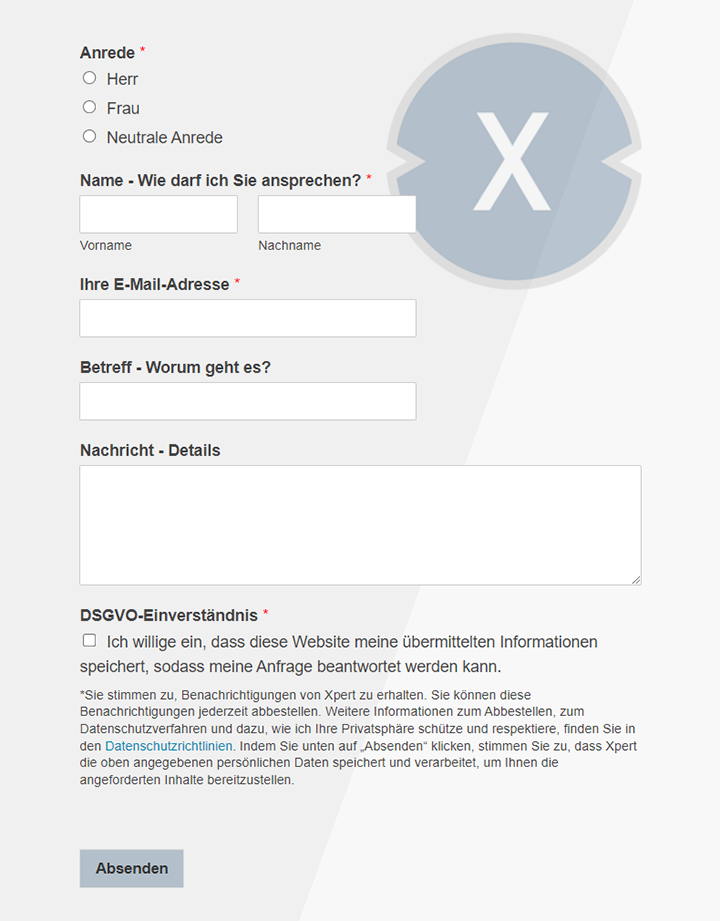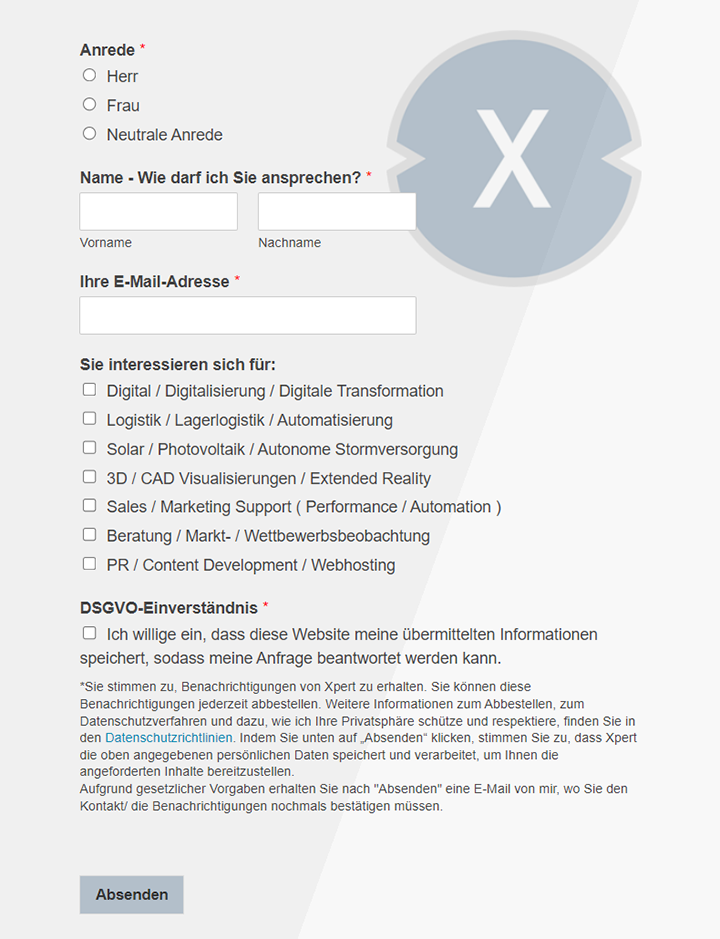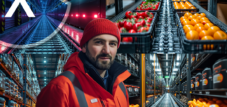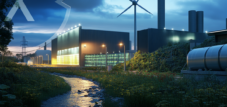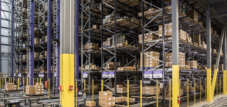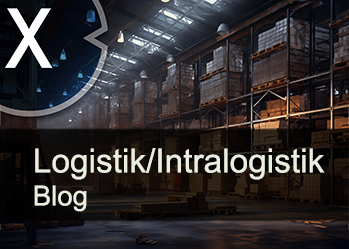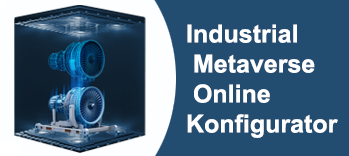Future-proof logistics: Why modular automation is crucial in the cold chain
Xpert pre-release
Language selection 📢
Published on: September 10, 2025 / Updated on: September 10, 2025 – Author: Konrad Wolfenstein

Future-proof logistics: Why modular automation is crucial in the cold chain – Creative image: Xpert.Digital
Flexible instead of rigid: That's why modular automation is the key to the modern cold chain
The silent transformation in cold storage: This technology is changing food logistics forever
Modern food logistics faces unprecedented challenges. The increasing complexity of consumer demands and rapidly changing market dynamics require logistics systems that are not only efficient, but above all flexible and adaptable. Companies in the food industry are increasingly realizing that traditional, rigid automation solutions are no longer sufficient to keep pace with volatile market conditions.
The solution lies in modular automation approaches, particularly shuttle storage systems, which enable gradual and demand-based scaling. These technologies provide the flexibility needed to respond to fluctuating demand without requiring massive upfront investments. While ensuring critical cold chain compliance, essential for food safety, they also help ensure the safety of the product.
The need for flexible logistics systems in a changing market environment
The German food industry is undergoing a profound transformation. Following sales losses last year and in the face of price-conscious consumers and persistent inflation, companies are faced with the challenge of increasing their efficiency while responding flexibly to market changes. The market is increasingly shaped by changing consumer preferences, ranging from more sustainable and healthier products to regional origins and convenience-oriented solutions.
The digitalization of the consumer landscape is further accelerating this trend. Online grocery retail is growing continuously and is expected to reach a market volume of €17 to €18 billion by 2030. This development requires logistics service providers to adopt a completely new approach to warehousing and distribution, as e-commerce orders, due to their small size and high variability, pose different requirements than traditional wholesale customers.
Seasonal fluctuations and volatile ordering patterns characterize everyday life in food logistics. Bakeries and butchers order small quantities, while supermarket chains order entire pallets. This variability coincides with an acute shortage of skilled workers in the industry. Companies that fail to adapt to these changing conditions in a timely manner risk losing market share and long-term competitiveness.
The cold chain presents a particular challenge. Temperature fluctuations of just three degrees Celsius can have a massive impact on food quality and be hazardous to health. Maintaining a seamless cold chain from production to delivery requires precisely coordinated logistics processes and state-of-the-art automation technology.
At the same time, regulatory requirements are continually increasing. European food hygiene regulations and national cold chain monitoring regulations require companies to have comprehensive documentation and control systems. These compliance requirements can only be met efficiently with intelligent, automated solutions.
Modular automation as the key to scalability
Modular automation systems, especially shuttle storage systems, offer an innovative answer to the complex challenges of modern food logistics. Unlike rigid, fully automated storage systems, these technologies enable flexible and needs-based adaptation to changing requirements.
Shuttle systems operate on the principle of modular expandability. Compact shuttles move on rails within a shelving system, efficiently transporting pallets or containers between different storage levels. A special feature is the ability to deploy multiple shuttles in parallel and expand the system as needed without interrupting ongoing operations.
A key advantage of modular systems is the scalability of investments. Companies can start with a basic configuration and gradually expand the system as business volume grows. This significantly reduces financial risk and enables predictable capital allocation over several years.
The technical flexibility is evident in various dimensions. Shuttle systems can cover temperature ranges from minus 30 to plus 50 degrees Celsius and are therefore suitable for both refrigerated and frozen storage applications. Storage density can be optimized through multi-deep storage, with up to four pallets stored one behind the other. At the same time, modern systems enable throughputs of up to 1,500 storage and retrieval operations per hour and aisle.
The modular design also extends to the software level. Modern warehouse management systems are designed to scale with growing requirements and adapt to changing business processes. AI-supported algorithms continuously optimize the warehouse strategy, taking into account factors such as product rotation, seasonal fluctuations, and energy efficiency.
A practical example of the benefits of modular automation is the implementation at Ospelt Food AG. Thanks to a customized shuttle system, the company was able to increase its pallet throughput to 60 units per hour while simultaneously ensuring seamless temperature control. Full integration into the ERP system enables consistent monitoring and documentation of the cold chain.
The energy efficiency of modular systems also contributes to cost-effectiveness. Their compact design and intelligent control significantly reduce energy consumption compared to conventional storage systems. This effect is particularly pronounced in cold storage facilities, as the amount of air to be cooled is significantly lower.
Gradual growth without large upfront investments
The traditional approach to warehouse automation often required millions of dollars in investments in complete systems before the first operational benefits could be realized. Modular automation approaches break this paradigm and enable companies to expand their automation capabilities organically and as needed.
The concept of incremental expansion begins in the planning phase. Companies can start with a basic system that covers current requirements while maintaining the infrastructure for future expansion. This approach reduces initial capital costs by up to 60 percent compared to a full-scale deployment.
The financial flexibility of modular systems is evident in several aspects. Temporary shuttle rental allows companies to absorb capacity peaks without tying up capital. This option is particularly attractive for companies with strong seasonal fluctuations, which are common in the food industry.
The return on investment (ROI) of modular systems typically materializes more quickly than with full automation. This is due to lower initial investment costs, shorter implementation times, and the ability to realize productivity gains with the very first module. Studies show that modern shuttle systems can pay for themselves in as little as 18 to 24 months.
The implementation strategy follows a structured approach. In the first phase, an aisle or warehouse area is typically automated to gain experience and optimize processes. The insights gained are then incorporated into the planning of the next expansion stages. This iterative approach minimizes implementation risks and ensures that the system is optimally tailored to the specific business requirements.
The ability to combine different levels of automation is particularly advantageous. Companies can fully automate critical areas while operating less frequently used areas semi-automatically or manually. This hybrid approach optimizes the investment-benefit ratio.
Existing systems can be expanded without interrupting operations. New shuttles can be integrated during ongoing operations, and additional storage levels can be built gradually. This continuity is particularly important in food logistics, as disruptions to the cold chain can result in costly loss of goods.
Modern financing models further support the modular approach. Leasing options for individual system components allow companies to conserve liquidity while benefiting from the latest technologies. Pay-per-use models go even further, tying costs directly to actual system usage.
Adaptability and resilience as competitive advantages
In an increasingly volatile business environment, adaptability and resilience are becoming key competitive advantages. Companies that make their logistics systems flexible can not only respond better to market changes but also capitalize on opportunities arising from new developments.
Resilience in the supply chain means more than just the ability to recover from disruptions. Modern resilient systems are designed to anticipate disruptions, minimize their impact, and continuously adapt to changing conditions. In food logistics, where maintaining the cold chain is critical, the ability to adapt quickly can make the difference between success and failure.
The COVID-19 pandemic has demonstrated the importance of flexible and resilient logistics systems. Companies with modular automation solutions were able to adapt their capacities to changing demand patterns more quickly than operators of rigid systems. At the same time, automated processes reduced dependence on labor during times of contact restrictions and staff shortages.
Modular shuttle systems offer various dimensions of adaptability. At the operational level, storage strategies can be dynamically changed to respond to seasonal fluctuations or product range changes. Software-based control allows channel depths and storage priorities to be adjusted without physical remodeling.
Technical flexibility is reflected in the ability to handle various load carriers. Modern systems can simultaneously process pallets of different sizes, containers of various formats, and even special load carriers. This versatility is particularly valuable in food logistics, as different product categories require different packaging formats.
The scalability of the systems contributes to long-term resilience. If market conditions change or new business areas are opened up, modular systems can be expanded or reconfigured accordingly. This future-proofing significantly reduces the risk of making bad investments.
Energy efficiency and sustainability are becoming key resilience factors. Rising energy costs and stricter environmental regulations are forcing companies to optimize their logistics processes. Modular automation systems, thanks to their compact design and intelligent control, offer significant potential for energy and emissions savings.
The integration of advanced technologies such as IoT sensors, artificial intelligence, and edge computing increases the adaptability of modular systems. Sensors continuously monitor temperature, humidity, and other critical cold chain parameters. AI algorithms analyze this data in real time and can initiate preventative measures before problems arise.
Predictive maintenance approaches reduce unplanned downtime and increase system availability. Continuous monitoring of the system status allows for optimal planning of maintenance work and timely procurement of spare parts. This is particularly critical in food logistics, as system failures can disrupt the cold chain and thus lead to significant product losses.
The ability to integrate into existing systems further enhances adaptability. Modern modular automation solutions are designed to communicate seamlessly with ERP systems, inventory management systems, and other enterprise applications. This connectivity makes it possible to view automation as an integral part of the entire value chain.
Xpert partner in warehouse planning and construction
Modular automation systems: Flexibility and efficiency for modern warehouse processes
The role of digitalization in modular automation systems
Digitalization forms the backbone of modern modular automation solutions and enables the flexible and intelligent management of complex logistics processes. In food logistics, where precision and traceability are critical, digital technologies create the basis for efficient and secure processes.
Cloud-based warehouse management systems enable centralized control and monitoring of distributed warehouse locations. These systems can respond to changes in demand in real time and dynamically reallocate inventory between different locations. For companies with multiple warehouses or a complex distribution structure, this functionality offers significant efficiency benefits.
Big data analytics and machine learning are revolutionizing warehouse strategy and inventory optimization. Modern systems analyze historical sales data, weather information, seasonal trends, and even social media activity to create precise demand forecasts. These predictions enable proactive inventory optimization and minimize overstocks and stockouts.
The integration of IoT sensors creates complete transparency regarding the condition of stored goods. Temperature, humidity, and motion sensors continuously monitor conditions in the cold chain. In the event of deviations from target values, alarms can be automatically triggered and corrective measures initiated. This preventative approach reduces product losses and ensures compliance with all quality standards.
Blockchain technology offers new opportunities for traceability and transparency in food logistics. Every step in the supply chain can be immutably documented and traced if necessary. This is especially important in the event of recalls or quality issues, where rapid and precise identification of affected batches is crucial.
5G and edge computing enable ultrafast data transmission and local processing directly in the warehouse. Latency times in the millisecond range allow precise control of shuttles and other automated components. At the same time, local data processing reduces dependence on stable internet connections and increases system security.
Digital twins are revolutionizing the planning and optimization of warehouse systems. These virtual replicas of the physical warehouse make it possible to simulate and test various scenarios before implementing changes in the real environment. This allows companies to pre-assess the impact of capacity expansions, layout changes, or new warehouse strategies.
Economic analysis of modular automation investments
The economic evaluation of modular automation investments requires a holistic approach that goes beyond the mere acquisition costs. In food logistics, where margins are often low and cost pressure is high, investment decisions must be carefully calculated and justified.
The cost structure of modular systems differs fundamentally from traditional fully automated solutions. While traditional systems require high initial investments, modular approaches allow for staggered capital commitment. Companies can start with investments in the mid-six-figure range instead of having to invest several million euros immediately.
The payback period for modular shuttle systems typically ranges from 18 to 36 months, depending on the system configuration and specific operating conditions. This comparatively short payback period results from several factors: lower initial investment, faster implementation, and immediate productivity gains from the first module.
Labor costs represent a significant cost item in food logistics. Modular automation can reduce labor requirements by 30 to 50 percent, while simultaneously making the remaining jobs more qualified and ergonomically appealing. In times of skilled labor shortages, automation often offers the only way to maintain the required capacity.
Energy cost savings contribute significantly to profitability, especially in cold storage facilities. The compact design of modular systems reduces the volume to be cooled by up to 40 percent compared to conventional storage systems. With rising energy prices, these savings alone can justify 20 to 30 percent of the system costs.
Quality cost savings result from precise control of storage conditions and the reduction of manual errors. Automated systems minimize damage caused by improper handling and ensure consistent cold chain maintenance. In food logistics, even small reductions in the loss rate can result in significant cost savings.
The scalability of modular systems offers financial flexibility as requirements grow. Instead of installing a completely new system, existing systems can be expanded gradually. The additional investment is often significantly less expensive than new installations because the basic infrastructure is already in place.
Tax considerations support the economic viability of modular investments. Gradual acquisition allows depreciation benefits to be spread over several years. At the same time, various funding programs for digitalization and automation enable additional cost savings.
The risk profile of modular investments is more favorable than that of fully automated systems. Smaller investment amounts reduce the absolute risk of loss, while the gradual implementation reveals planning errors early on and enables corrections. This risk reduction is particularly valuable in uncertain market environments.
Future prospects and technological developments
The future of modular automation in cold chain logistics will be significantly shaped by technological innovations and evolving market requirements. Several megatrends are emerging that will shape the industry's development in the coming years.
Artificial intelligence and machine learning will play an even more central role in warehouse management. Future systems will not only react to historical data but will also proactively suggest and implement optimizations. Predictive analytics will enable demand fluctuations to be predicted with even greater precision and warehouse strategies to be adjusted accordingly.
Robot technology is evolving rapidly and will open up new application possibilities in food logistics. Collaborative robots (cobots) are increasingly being used in order picking, while autonomous mobile robots (AMRs) are taking over transport between different warehouse areas. The integration of these technologies into modular shuttle systems will unlock new efficiency potential.
Sustainability goals will significantly influence the development of automation technology. Energy-efficient drives, regenerative braking systems, and optimized control algorithms will become standards for new systems. At the same time, circular economy principles will shape system design, with components being engineered for maximum reusability and recyclability.
Digitalization is complemented by new technologies such as augmented reality (AR) and virtual reality (VR). These technologies enable intuitive user interfaces, improved training opportunities, and more efficient maintenance processes. Maintenance technicians, for example, can gain direct access to system information and repair instructions via AR glasses.
Modular system architectures will become even more flexible and interoperable. Standards for communication between components from different manufacturers are evolving, enabling companies to implement best-of-breed solutions. This development reduces dependence on individual vendors and increases investment security.
The integration of renewable energies into storage systems is becoming commonplace. Photovoltaic systems on warehouse roofs, battery buffer systems, and intelligent load balancing will transform warehouses into energy-self-sufficient units. These technologies offer significant cost-reduction potential, particularly in cold chain logistics, where energy demand is high.
New materials and manufacturing technologies will improve the performance and durability of automation components. 3D printing enables the cost-effective production of spare parts on demand, while new alloys and coatings extend maintenance intervals.
The interconnection between different logistics hubs will be intensified by 5G and future communication technologies. Supply chains will become integrated, intelligent networks in which information is exchanged in real time between all participants. This interconnection enables optimized planning and reactive adjustments at the network level.
Modular automation in cold chain logistics is at the dawn of a revolutionary development. Companies that invest in flexible and future-proof systems today will not only benefit from immediate efficiency gains but will also optimally position themselves for the challenges of the coming years. The combination of gradual scalability, technological innovation, and economic flexibility makes modular automation solutions the ideal answer to the complex requirements of modern food logistics.
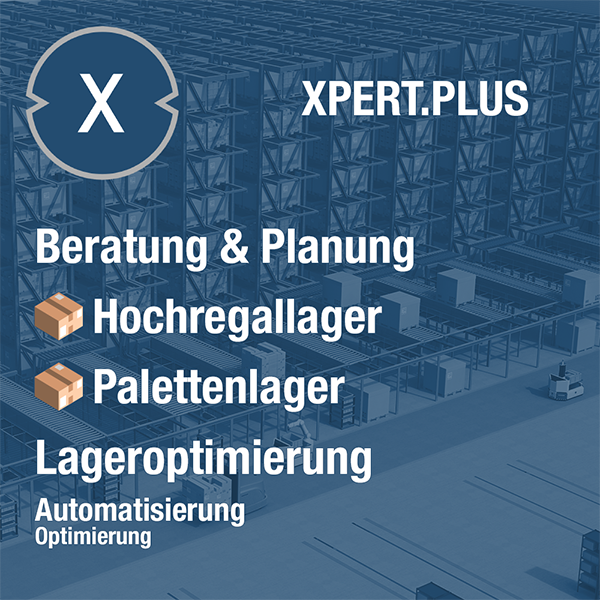
Xpert.Plus warehouse optimization - high-bay warehouses such as pallet warehouses consulting and planning
We are there for you - advice - planning - implementation - project management
☑️ SME support in strategy, consulting, planning and implementation
☑️ Creation or realignment of the digital strategy and digitalization
☑️ Expansion and optimization of international sales processes
☑️ Global & Digital B2B trading platforms
☑️ Pioneer Business Development
I would be happy to serve as your personal advisor.
You can contact me by filling out the contact form below or simply call me on +49 89 89 674 804 (Munich) .
I'm looking forward to our joint project.
Xpert.Digital - Konrad Wolfenstein
Xpert.Digital is a hub for industry with a focus on digitalization, mechanical engineering, logistics/intralogistics and photovoltaics.
With our 360° business development solution, we support well-known companies from new business to after sales.
Market intelligence, smarketing, marketing automation, content development, PR, mail campaigns, personalized social media and lead nurturing are part of our digital tools.
You can find out more at: www.xpert.digital - www.xpert.solar - www.xpert.plus





